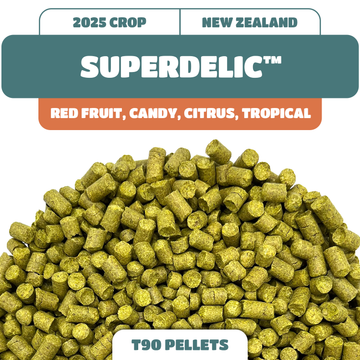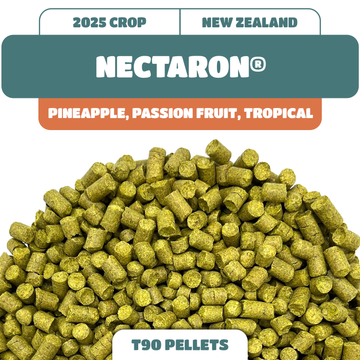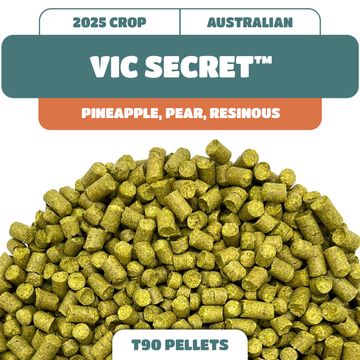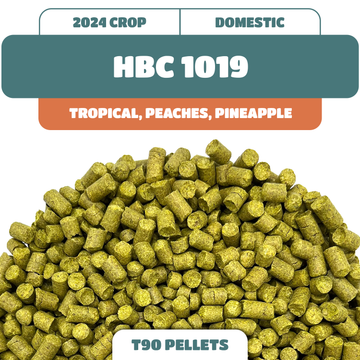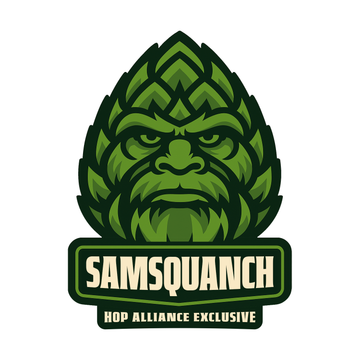Why Do Brewers Put Hops in Beer?
In 1516, Duke Wilhelm IV of Bavaria decreed that beer should only have four ingredients: water, malted grains, hops and yeast. This is the Reinheitsgebot, or the German beer purity law. This 500-year-old basic recipe is still followed by beer brewers even until today.
Water—as in the human body—constitutes most of beer. In fact, the typical beer is 90 to 95% water. Malted grains, typically barley, provide beer with its signature color, flavor and the sugar that yeast, through the process of fermentation, will turn into alcohol.
But what about hops? What does it do or add to our beloved brew?
Hops is one of the four main ingredients in producing beer for a reason. If you’re wondering why hops is critical in creating your favorite pint (or stein), read on.
All About Hops
Hops, or Humulus lupus, is a vine that grows in cool climates. They can grow to climb trellises that are as tall as 18 feet (5.5 meters).
Only the cone-like flowers of the female hops plant are used in the production of beer. The cone possesses the lupulin glands which contain bitter acids, essential oils and resins—all important ingredients in brewing beer. The flowers are dried and added to beer in their cone form or as pellets, plugs or extracts.
Although a cousin of cannabis, hops doesn’t contain tetrahydrocannabinol (THC) but rather alpha acids and oils that impart flavor and aroma to the beer. Hops are generally used to make beer bitter, but it can also have a grassy taste, or flowery or citrusy flavor depending on the varietal.
Types of hops
Hops are classified into two main categories: bittering hops and aroma hops. Bittering hops contain high amounts of alpha acids, typically about 10%, and as the name suggests, are added to make beer bitter. Aroma hops, on the other hand, only have about 5% alpha acids; they are added to provide high aroma levels to the brew. There are also dual-purpose hop varieties that contain 5 to 9% alpha acids and add both bitterness and aroma to the beer.
Timing is everything
When it comes to making beer, brewers need to calibrate exactly when to add the hops. For a more bitter beer, they will add bittering hops at the start of the boil. The longer these hops boil (at least 45 minutes to an hour and a half), the more bitter the beer will become.
Aroma hops, on the other hand, are added at the end of the boil for about five to 15 minutes. A long boiling process destroys the hops’ aromatic oils, so this is done to avoid losing a lot of oils to steam evaporation during the boil.
Brewers may also add the hops during secondary fermentation to increase aroma without the extra bitterness. This process is called dry hopping.
There’s also the wet hopping technique, which uses fresh, un-dried hops within 24 hours of being harvested. Due to difficulty in logistics, wet hopping isn’t as common as dry hopping, but brewers who use this technique will be rewarded with beer that has vivid aroma and less bitter flavor profiles.
How Brewers Use Hops in Beer?
Brewers add hops to beer mainly for the following reasons:
Hops counterbalances the sweetness of the malted grains.
Brewing beer starts with mashing, the process of steeping grains in hot water. The byproduct of mashing is wort, a sweet liquid that needs to be boiled and fermented before it becomes beer. Hops are added to balance out the wort’s sweetness.
Hops add flavor and aroma.
Hops come in dozens of varietals and strains grown mostly from regions between the 35th and 55th parallels in both hemispheres—places considered to have the ideal growing conditions for hops. The growing region’s dirt, climate and weather pattern affect a hop variety’s profile and characteristics. Just like the grapes used in wines, hops offer distinct bitterness, flavors and aromas depending on where they were grown.
Noble hops, which include strains such as Tettnanger, Hallertau and Saaz, are grown in Germany and the Czech Republic. They can be tasted in traditional German and Czech pilsners and lagers. They have low levels of alpha acid but are rich in humulene, a high-aroma essential oil.
American hops, such as Centennial, Mosaic, Galena and Cascade, feature bold citrus and pine notes and are very aromatic. They contain high amounts of the essential oil myrcene.
English hops, such as Fuggle, on the other hand, have low amounts of myrcene so they are more mild and present subtle aromas. English hops are essential in brewing traditional British ales.
Hops stabilize and preserve beer.
In addition to alpha acids and essential oils, hops also contain beta acids, which are responsible for delaying the effects of spoilage caused by bacteria. Thus, the beta acids in hops help extend the beer’s shelf life by acting as a natural preservative.
Hops allow brewers to experiment with different recipes.
Hop bitterness is measured in terms of its alpha acid content, which can range from 2.5% up to 15%. Brewers also measure hop bitterness in International Bitterness Units (IBU), which ranges from 0 upward. American lagers are between 8 to 18 IBUs, while IPAs are around 120 IBUs. Brewers need these numbers to determine the bittering potential of each hop variety, which will allow them to determine the exact amount required for a particular brew recipe and enable them to substitute with a different hop variety if supply is low.
Hops—It Can Make All the Difference in Your Pint of Beer
Hops is an essential ingredient in brewing beer and it can affect the beer’s bitterness, flavor and aroma, all of which are factors brewers consider when coming up with a beer recipe.
When brewing beer, whether at home or at a commercial scale, it’s always a good idea to think about the variety of hops you’re going to use. The style or flavor profile you’re going for will dictate what hop variety you choose.
Michigan Hop Alliance features many varieties of hops, from the local Cascades to Germany’s Hallertau to the latest and most popular hop varieties and many more. You can pick and experiment, knowing that no matter which hop variety you choose will be of the highest quality from reputable farms sold at the best possible price.
So, what hop variety will you be using for your brew today?









